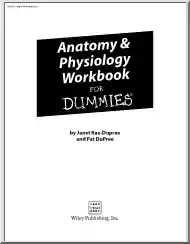No comments yet. You can be the first!
Content extract
PROTAPER™ the latest innovation in effective and efficient root canal preparation ProTaper™ nickel titanium rotary files are specially designed to instrument difficult, highly calcified, and severely curved root canals. The patented, progressive taper and advanced flute design provide the flexibility and efficiency to achieve consistently successful cleaning and shaping results. Active cutting angle “Another unique feature of the ProTaper™ instruments is the convex triangular cross-section which reduces the contact area between the file and dentine. This greater cutting efficiency has been safely incorporated through balancing the pitch and helical angles. ” Multiple and Progressive Tapers from 2 to 19% “A progressively tapered file engages a smaller zone of dentine which reduces torsional loads, file fatigue and the potential for breakage. It clinically serves to significantly improve flexibility, cutting efficiency and typically reduces the number of recapitulations
needed to achieve length, especially, in tight or more curved canals.” “The ProTaper™ instruments effectively remove debris out of the canal and generally only three instruments are required to produce a fully tapered canal that exhibits uniform shape over length.” Design Features and Advantages The new ProTaper™ instruments represent a revolutionary progression in root canal preparation procedures. The basic series comprised of 3 shaping and 3 finishing instruments : The auxiliary Shaping file or SX is used to optimally shape canals in shorter roots, relocate canals away from external root concavities and to produce more shape, as desired, in the coronal aspects of canals in longer roots. The SX file provides many advantages over Gates Glidden and other coronal shaping instruments used today. Shaping file N° 1 or S1 is designed to prepare the coronal one third of the canal, whereas Shaping file N° 2 or S2 enlarges and prepares the middle one third. Although both
instruments optimally prepare the coronal 1 two thirds of a canal, they do progressively enlarge its apical one third. With partially active tips and maximal flute diameters approaching 1,2 mm each, each Shaping file has 14 mm of cutting blades. The Finishing files have been designed to optimally finish the apical one third, and also progressively expand the shape in the middle one third of the canal. Generally, only one Finishing is required to prepare the apical one third of a canal and the one selected is based on the canal’s curvature and cross-sectional diameter. ProTaper™ Benefits • Patented progressive taper design improves flexibility and cutting efficiency, especially in tighter or more curved canals. • Fewer files are needed to achieve a fully tapered canal exhibiting uniform shape over length. •ProTaper™ files engage a smaller area of dentin, reducing torsional loads, file fatigue, and the potential for separation. • Convex triangular cross section
reduces contact area between file and dentin. Working sequences & guidelines Guidelines 1. Work instruments to light resistance and never force them. 2. Only use instruments in a well irrigated and lubricated canal. 3. The appropriate finishing file passively follows the canal to the desired length then is immediately 2 withdrawn. 4. Use in constant rotation at a speed of 250-350 rpm. 5. Clean flutes frequently and check for signs of distortion or wear. The ProTaper™ technique Explore the root canal with a stainless steel N° 10K hand file using a small reciprocating back and forth motion. Work passively and progressively until it is a few millimeters short of the estimated working length. Fill the pulp chamber full with either Glyde™ or Sodium Hypochlorite (NaOCl) for all initial negotiation procedures. Now, start the ProTaper™ sequence with Shaping file N° 1 which has purple ring. The S1 is carried into the canal and moved apically to just short of the depth of the
hand files. In more difficult canals, one or two recapitulations may be necessary to enlarge the coronal two thirds of the canal. Irrigate and go back in with 10K hand file to break up debris and then re-irrigate. The SX (no colour ring) is then used with a brushstroke action to selectively remove dentine, relocate the canal away from furcal danger and achieve straight line radicular access. With improved access, the SX is passively fit a little deeper into the canal until it encounters light resistance. Bounce off this resistance and brush out of the canal in an apical to coronal direction. Continue with the SX until about two thirds of the overall length of its cutting blades are below the orifice. Don’t forget to irrigate Once the pre-enlargement procedure is finished with excellent coronal two thirds access, use a precurved 10K hand file to negotiate the rest of the canal, establish patency, and confirm working length. When working length is confirmed and a smooth GLYDE path to
the terminus is verified, use Shaping file N° 1 to length. 3 Following the use of S1, irrigate and use Shaping file N° 2 which has a white ring on its handle. This file will typically go to full working length on the first pass. Following its use, irrigate When the coronal two thirds of the canal has been prepared, the apical one third can be finished. The Finishing file N° 1 has a yellow ring (ISO 020) and with the canal flooded with irrigant, carefully take the F1 to working length and immediately withdraw. Gauge the size of the foramen by placing a 20 K hand file to length. If snug at working length then the canal is prepared and ready to obturate. If it is loose, use Finishing file N° 2 (red ring ISO 025). Irrigate and carry the F2 to length and gauge the size of the foramen by placing a 25 K hand file to length. If snug at length then the canal is prepared and ready to obturate. If it is loose use Finishing file N° 3 (blue ring ISO 030) and carefully carry it to
length. Gauge the foramen with the equivalent hand file. Normally, this would be as large as you would prepare a calcified and/or curved canal. 4 Buckling force – 47% gain in buckling resistance on C+Files no. 008 – 69% gain in buckling resistance on C+Files no. 010 – 142% gain in buckling resistance on C+Files no. 015 • Easier location of canalar orifices • Easier access to apical third • Better negotiation of calcifications • Better tactile feel • Buckling resistance provided by a wider range of taper sizes. Depth gauge •Markings on the instruments make it easier to determine the working length when working with X-rays • Depth gauges allow easier positioning of the silicone stop at working length. Pyramid-shaped tip • Easier insertion during catheterization. Polished instruments • The polished surface of the C+ instruments allows better removal of debris as well as smoother insertion of the instrument in the canal. Square section 5 • The square
section allows better resistance to distortion • Consistent cutting sensation across the whole range of instruments, and increased safety. Choice of three lengths • The three available lengths allow optimal efficiency in all clinical cases. 6
needed to achieve length, especially, in tight or more curved canals.” “The ProTaper™ instruments effectively remove debris out of the canal and generally only three instruments are required to produce a fully tapered canal that exhibits uniform shape over length.” Design Features and Advantages The new ProTaper™ instruments represent a revolutionary progression in root canal preparation procedures. The basic series comprised of 3 shaping and 3 finishing instruments : The auxiliary Shaping file or SX is used to optimally shape canals in shorter roots, relocate canals away from external root concavities and to produce more shape, as desired, in the coronal aspects of canals in longer roots. The SX file provides many advantages over Gates Glidden and other coronal shaping instruments used today. Shaping file N° 1 or S1 is designed to prepare the coronal one third of the canal, whereas Shaping file N° 2 or S2 enlarges and prepares the middle one third. Although both
instruments optimally prepare the coronal 1 two thirds of a canal, they do progressively enlarge its apical one third. With partially active tips and maximal flute diameters approaching 1,2 mm each, each Shaping file has 14 mm of cutting blades. The Finishing files have been designed to optimally finish the apical one third, and also progressively expand the shape in the middle one third of the canal. Generally, only one Finishing is required to prepare the apical one third of a canal and the one selected is based on the canal’s curvature and cross-sectional diameter. ProTaper™ Benefits • Patented progressive taper design improves flexibility and cutting efficiency, especially in tighter or more curved canals. • Fewer files are needed to achieve a fully tapered canal exhibiting uniform shape over length. •ProTaper™ files engage a smaller area of dentin, reducing torsional loads, file fatigue, and the potential for separation. • Convex triangular cross section
reduces contact area between file and dentin. Working sequences & guidelines Guidelines 1. Work instruments to light resistance and never force them. 2. Only use instruments in a well irrigated and lubricated canal. 3. The appropriate finishing file passively follows the canal to the desired length then is immediately 2 withdrawn. 4. Use in constant rotation at a speed of 250-350 rpm. 5. Clean flutes frequently and check for signs of distortion or wear. The ProTaper™ technique Explore the root canal with a stainless steel N° 10K hand file using a small reciprocating back and forth motion. Work passively and progressively until it is a few millimeters short of the estimated working length. Fill the pulp chamber full with either Glyde™ or Sodium Hypochlorite (NaOCl) for all initial negotiation procedures. Now, start the ProTaper™ sequence with Shaping file N° 1 which has purple ring. The S1 is carried into the canal and moved apically to just short of the depth of the
hand files. In more difficult canals, one or two recapitulations may be necessary to enlarge the coronal two thirds of the canal. Irrigate and go back in with 10K hand file to break up debris and then re-irrigate. The SX (no colour ring) is then used with a brushstroke action to selectively remove dentine, relocate the canal away from furcal danger and achieve straight line radicular access. With improved access, the SX is passively fit a little deeper into the canal until it encounters light resistance. Bounce off this resistance and brush out of the canal in an apical to coronal direction. Continue with the SX until about two thirds of the overall length of its cutting blades are below the orifice. Don’t forget to irrigate Once the pre-enlargement procedure is finished with excellent coronal two thirds access, use a precurved 10K hand file to negotiate the rest of the canal, establish patency, and confirm working length. When working length is confirmed and a smooth GLYDE path to
the terminus is verified, use Shaping file N° 1 to length. 3 Following the use of S1, irrigate and use Shaping file N° 2 which has a white ring on its handle. This file will typically go to full working length on the first pass. Following its use, irrigate When the coronal two thirds of the canal has been prepared, the apical one third can be finished. The Finishing file N° 1 has a yellow ring (ISO 020) and with the canal flooded with irrigant, carefully take the F1 to working length and immediately withdraw. Gauge the size of the foramen by placing a 20 K hand file to length. If snug at working length then the canal is prepared and ready to obturate. If it is loose, use Finishing file N° 2 (red ring ISO 025). Irrigate and carry the F2 to length and gauge the size of the foramen by placing a 25 K hand file to length. If snug at length then the canal is prepared and ready to obturate. If it is loose use Finishing file N° 3 (blue ring ISO 030) and carefully carry it to
length. Gauge the foramen with the equivalent hand file. Normally, this would be as large as you would prepare a calcified and/or curved canal. 4 Buckling force – 47% gain in buckling resistance on C+Files no. 008 – 69% gain in buckling resistance on C+Files no. 010 – 142% gain in buckling resistance on C+Files no. 015 • Easier location of canalar orifices • Easier access to apical third • Better negotiation of calcifications • Better tactile feel • Buckling resistance provided by a wider range of taper sizes. Depth gauge •Markings on the instruments make it easier to determine the working length when working with X-rays • Depth gauges allow easier positioning of the silicone stop at working length. Pyramid-shaped tip • Easier insertion during catheterization. Polished instruments • The polished surface of the C+ instruments allows better removal of debris as well as smoother insertion of the instrument in the canal. Square section 5 • The square
section allows better resistance to distortion • Consistent cutting sensation across the whole range of instruments, and increased safety. Choice of three lengths • The three available lengths allow optimal efficiency in all clinical cases. 6




 When reading, most of us just let a story wash over us, getting lost in the world of the book rather than paying attention to the individual elements of the plot or writing. However, in English class, our teachers ask us to look at the mechanics of the writing.
When reading, most of us just let a story wash over us, getting lost in the world of the book rather than paying attention to the individual elements of the plot or writing. However, in English class, our teachers ask us to look at the mechanics of the writing.